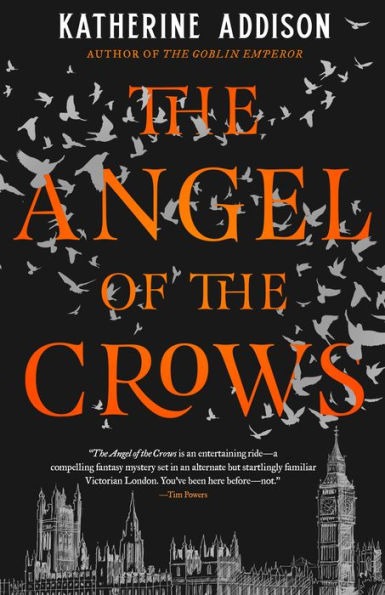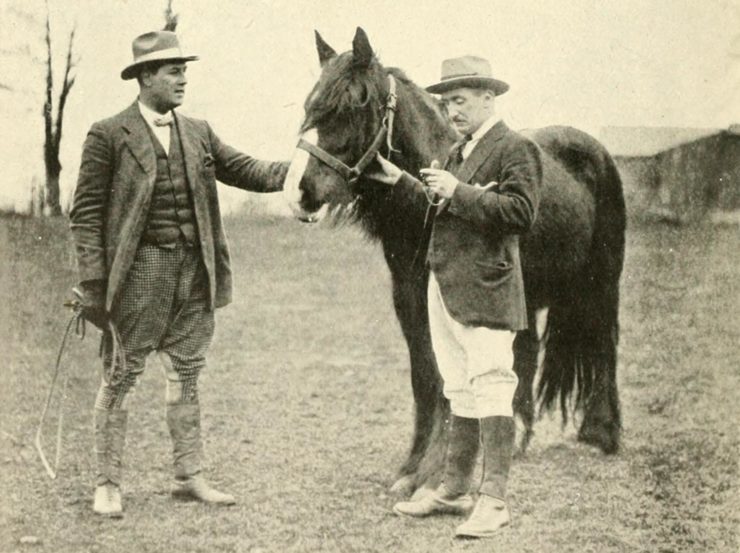One of the hardest things for a human being to do is to understand, and empathize with, the Other. By which I mean any sentient thing that is not the human’s specific self. The more different the Other is from that self, the less easy it is to relate.
I’m not just talking about animals here, or horses in particular, since this is, after all, SFF Equines. I’m talking about Other genders, Other cultures, Other ways of viewing the world. Most if not all of our wars and conflicts either originate in or devolve into some form of this—from invading a country that has resources we want or need, to declaring a particular tribe or nation or faith or skin color “evil” or “deluded” or “lesser” or “not us,” to allotting specific, value-weighted traits to each gender.
History doesn’t escape this, and neither does fiction. Animal training is loaded with it. So is anthropology, psychology, sociology. The history of human thought is, to a large extent, the history of biases and value judgments codified into “universal” laws—nearly always written in the judges’ favor.
So what brought this on? Years of raising and training horses—learning how to train them most safely and effectively, which means learning how to think like them. And also years of academic study as a historian, and years of being a writer of historical and fantastic fiction. When all these worlds collide, I realize how much the alien in the horse suit has to teach me about the other things I persist in doing.
Writers, like historians, spend a great deal of time studying the world around them and finding ways to make sense of it. If they’re successful, they create or describe worlds in which their readers or students can also, vicariously, live. That’s how horse training works, too. Be watchful, pay attention, study the horse. Learn as well as teach. To a large extent, become the horse.
I’ve been trying for most of my career to explain why so much historical and fantastic writing falls short for me. In historical work, I look for something that I call “period sense.” It’s the ability of the writer to evoke not just a fully realized past, but a past that rings true to the primary sources and the history of that place and time. Many dearly beloved and bestselling works may have splendid stories, memorable characters, super settings and seriously cool costumes—and the authors will claim years, if not decades, of research. And yet…they’re missing some essential element. Something is not connecting between the story and the period it’s purporting to bring to life. The whole thing, elaborate as it is, feels like a theme park.
Now I think I realize what it is. It’s a single word. Empathy.
By this I mean, the ability to put yourself inside the Other’s skin. To feel what they feel, to know what they know. To see the world as they see it—directly, and not through the lens of your own cultural biases. When you are in this state, you are the Other.
A horse trainer can’t help but learn to do this, especially when training sensitive, reactive, opinionated horses. She puts herself in the horse’s place, understands his instincts and biological imperatives, and doesn’t judge or punish when he blows up over what to a human is a trivial or nonexistent threat. What she does, instead, is correct and guide and reassure, and mold his behavior in ways that make their interaction safer and more pleasant for them both.
Buy the Book


The Angel of the Crows
To such a trainer, the horse is not an inferior being driven solely by Pavlovian reactions, or a dumb animal to be shown who’s boss, or a piece of sports equipment. He’s a fellow sentient being in a symbiotic partnership. And if she’s doing it right, that partnership is solidly two-way.
For a writer, the “horse” is the story, and the words that make up the story. The mind being guided is the reader’s. And if the reader feels that the writer has broken any part of the contract between them—to tell a well-crafted and believable story with both honesty and integrity—the reader will feel justly betrayed.
It is not possible for the writer to please every single reader. Readers bring their own biases to everything they read, and some stories will hit buttons that the writer never meant to hit, or just not catch the reader in the right place or with the right signals. That’s normal and acceptable, and is why the same book will be panned by one reader and adored by another.
But there is in all too many books (and many of those are bestsellers and multiple award winners) an element missing. Only a few readers may realize this—usually readers with expertise in whatever it is (horses, cars, guns, knitting, the American Civil War…), but it goes beyond technical details. It means going inside the world and the period, and seeing it from the inside out.
That’s hard. Getting inside the Other requires the writer to recognize and set aside her ingrained cultural biases. She must realize that ideas and values that she regards as default may not in fact be current in the Other world at all, and that her assumptions not only are not universal, they may in fact be regarded negatively by the culture she is writing about. And she must beware of treating it as a game. To the people who have to live through it, it is absolutely and devastatingly real.
Usually when I get to this point in the discussion, someone asks, “Well, what about time travel? Or if you’re not doing that, how about a character who is out of sync with the rest of the culture, and reflects our assumptions instead?” These are valid workarounds and have been used successfully many times. But in order to do it right, the author has to realize that she has certain assumptions—and one of them is that her culture and values are superior to those depicted in the book. In short, she imposes her personal prejudices on the characters and the period, and judges them accordingly.
This can go either way. The Middle Ages is a playground with great outfits, exotic castles, and Noble Knights Of Old (which I call “RenFest Medievalism”), or else it’s a back-alley garbage dump full of smells, diseases, and nasty, brutish, ignorant and benighted (and sometimes beknighted) people. The reality was that it was neither, though it had elements of both. And for the writer who wants to write accurately about it, one very important skill is to get into the mindset of the period, understand how people thought, and realize that for them, that way of thinking was just as natural to them as our own is to us.
This includes ways of thinking that we now regard as harmful or even evil, but in the period were seen quite differently. The writer’s challenge then is to convey these ideas in context, but without condoning or endorsing them—and to do it in such a way that the modern reader is not alienated or repelled. The writer has to balance being true to the period, refraining from imposing modern value judgments, but also remaining both accessible and credible. Each character is a sentient being with a history and a value system of his own; they may be presented as others see them—as a complete monster—but in really effective writing, they’re also presented from their own point of view, as they see themself. The writer has to step back at this point and be pure observer; but not in the sense of a tourist in a RenFayre. Rather, she is inhabiting their skin, being the Other.
No writer can avoid imposing her own values on what she writes. That’s what writing to a large extent is about. But if she realizes that those values and assumptions are, and how they relate to the world or period she is writing about, her writing will be that much stronger and that much more true to the world or the period. If she does it right, readers of all levels of knowledge and understanding will find the results satisfying—and some may learn to see the world or the period in a new way.
Judith Tarr’s first novel, The Isle of Glass, appeared in 1985. Since then she’s written novels and shorter works of historical fiction and historical fantasy and epic fantasy and space opera and contemporary fantasy, many of which have been reborn as ebooks. She has even written a primer for writers: Writing Horses: The Fine Art of Getting It Right. She has won the Crawford Award, and been a finalist for the World Fantasy Award and the Locus Award. She lives in Arizona with an assortment of cats, a blue-eyed dog, and a herd of Lipizzan horses.










